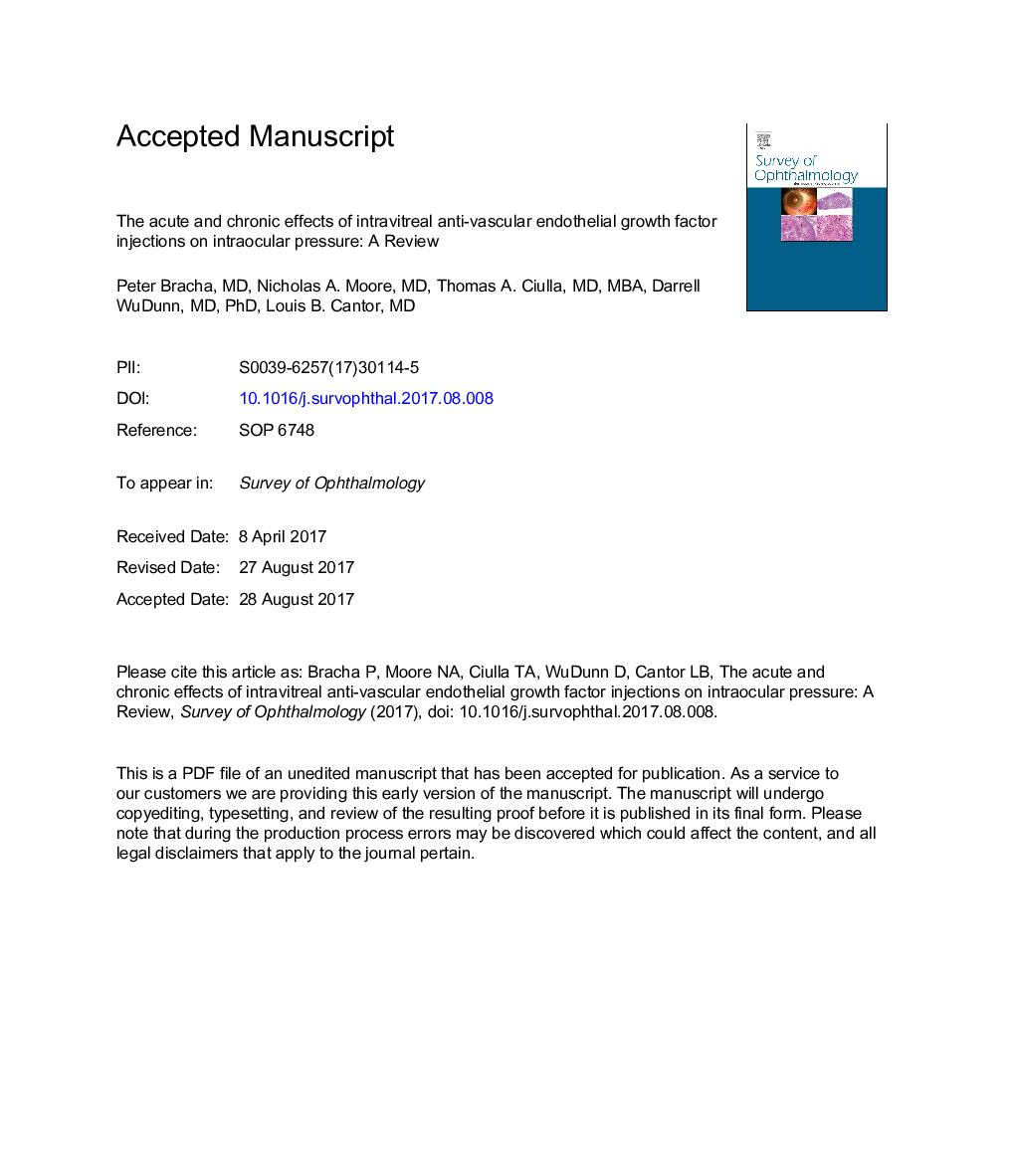| Article ID | Journal | Published Year | Pages | File Type |
|---|---|---|---|---|
| 8795186 | Survey of Ophthalmology | 2018 | 31 Pages |
Abstract
The acute and chronic effects of repeated intravitreal antivascular endothelial growth factor (VEGF) injections on intraocular pressure have not been fully characterized, and the development of sustained ocular hypertension could adversely affect patients who are at risk of glaucomatous optic neuropathy. As expected, volume-driven, acute ocular hypertension immediately follows intravitreal injection, but this pressure elevation is generally transient and well tolerated. Several medications have been investigated to limit acute ocular hypertension following anti-VEGF therapy, but the benefits of pretreatment are not conclusive. Chronic, sustained ocular hypertension, distinct from the short-term acute ocular hypertension after each injection, has also been associated with repeated intravitreal anti-VEGF injections. Risk factors for chronic ocular hypertension include the total number of injections, a greater frequency of injection, and preexisting glaucoma. Proposed mechanisms for chronic ocular hypertension include microparticle obstruction, toxic or inflammatory effects on trabecular meshwork, as well as alterations in outflow facility by anti-VEGF agents. Although limiting anti-VEGF therapy could minimize the risk of both acute and chronic ocular hypertension, foregoing anti-VEGF therapy risks progression of various macular diseases with resulting permanent central vision loss. While definitive evidence of damage to the retinal nerve fiber layer is lacking, patients receiving repeated injections should be monitored for ocular hypertension and patients in whom sustained ocular hypertension subsequently developed should be periodically monitored for glaucomatous changes with optic nerve optical coherence tomography and static visual fields.
Related Topics
Health Sciences
Medicine and Dentistry
Ophthalmology
Authors
Peter MD, Nicholas A. MD, Thomas A. MD, MBA, Darrell MD, PhD, Louis B. MD,
